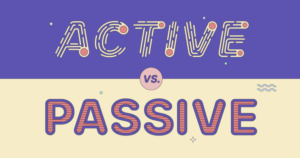
WAIT!
Think you’re ready to submit your feature script or pilot to Get Repped Now — or anywhere else? Don’t pull the trigger until you tick all the boxes below.
The Coverage Ink/Get Repped Now Last Looks Checklist – five essential things you need to do before making that submission.
Time’s a wastin’ — let’s get to it.

 5) You’re Damn Right We Are Going to Mention Spellcheck and Proofread (Sigh)
5) You’re Damn Right We Are Going to Mention Spellcheck and Proofread (Sigh)
 Here’s the deal. We all know we should spellcheck before sending our scripts out, right? Right. But how many of us actually do?
Here’s the deal. We all know we should spellcheck before sending our scripts out, right? Right. But how many of us actually do?
(crickets chirp)
That’s what we thought. So right now, spend the 11 minutes to run a proper spellcheck. Don’t count on Final Draft or MovieMagic to put the red squiggly line under all your typos, and for you to see them. Run the frickin’ spellcheck. You’ll be glad you did (and so will your reader.)
And while you’re at it, how about you print out the script and sit down poolside with yer umbrella drink in one hand and red marker in the other, and give that script a thorough read-through? Experience it as if you were just seeing it for the first time — as those you are submitting to will soon. Not only is this fun, but you will inevitably see a ton of things you never noticed on your iPad. The script will likely tighten up immeasurably, and you may even impress readers with your professional presentation and attention to detail.
 4) Active Voice Vs. Passive
4) Active Voice Vs. Passive
Avoid this critical error! Passive voice is indirect: John is walking down the street; whereas active voice is propulsive and gives your character agency: John walks down the street. (Or even better – choose a punchier verb than “walk.”)
One quick way to tell if you are using passive voice versus active: search your script for the words “is” and “are.” It’s fine in dialogue, or course, but if you’re using it in scene description, stop and think: is this the punchiest way to say this?
 MEH: Wilbur is putting on his shoes.
MEH: Wilbur is putting on his shoes.
YEP: Wilbur puts on his shoes.
MEH: The ball is being chased by the dog.
YEP: The dog chases the ball.
MEH: Meg is filling her overnight bag with opiates.
YEP: Meg fills her overnight bag with opiates.
Why is this a critical error? Believe it or not, many screenplay readers are trained to spot passive voice. If you use it, that’s potentially a ding against the material no matter how well you may do everything else.
And here’s a great Grammarly article that really digs deep on this.
 3) Edit Ruthlessly
3) Edit Ruthlessly
The typical screenplay or pilot can lose 10% (or more) of its volume without cutting anything important.
The essential, beautiful art of self-editing seems to elude some of us. Writing is fun, and that means letting our muse guide us! Go with the flow! That’s great, but… pro screenwriting is all about conciseness. How FEW words can you use to say something?
“Brevity is the soul of wit,” said some decent writer once.
Inevitably, there are paragraphs that run 5, 6, 7 lines or more that with a bit of careful scrutiny could convey the same thing in half the words. Now extrapolate that out to the entire screenplay. You might be able to lose 3-5 pages or more without cutting a single line of dialogue. Not only will this tighten up your writing, but it will the lower the page count, creating a better first impression.
So before you send anything out, put your editor cap on and scrutinize every every paragraph, every sentence. Every last word must fight for its inclusion. Imagine each one costs you 50 bucks – and you are a cheapskate like me. That sentence that uses 15 words — can you say it in six? Or do it with a look? Do we even need it at all?
Once you click into editing mode, you will see your writing in a different light – and that, friends, is a beautiful thing. Tighten, tighten, tighten.
 2) Read the Script ALOUD
2) Read the Script ALOUD
The single best way to identify clunky or on-the-nose dialogue: SPEAK it. For much the same reason that printing out the script makes it easier to spot typos and other glitches, reading your script aloud brings it to life in a way reading it your head cannot.
And what do we find when we do so? Well, for one thing, we spot the places where our dialogue sucks pretty quick! It’s a peculiar thing, but it’s true: when spoken aloud, dialogue either feels natural and flows, or it doesn’t. If it drops to the ground with a clunk, that’s a good indication you should take a closer look. Expository dialogue in particular often jumps out — like with flashing red lights and blaring klaxons.
Why not invite over a couple friends and make an evening of it? It will be a blast, and you’ll identify very quickly what works and what needs work. Best of all, fixes often are obvious, and your friends may even have some thoughtful suggestions that may help.
There’s a reason pretty much every TV show table-reads their scripts.
 1) Listen to Your Inner Voice
1) Listen to Your Inner Voice
There’s an interesting phenomena that happens when writers get notes: we often go, “I knew it!” Meaning deep down, we had an inkling something wasn’t working but couldn’t put our finger on it. But once identified by a third party, we’re like, “Duh, of course!”
What happens is, while we’re writing, we make choices. And sometimes those choices are great, and sometimes, well, putrid. Let’s say we write a really cute line – but it doesn’t quite feel appropriate for the scene. But because the line is clever, we override our inner voice and leave it in… until someone else says, “Yeah, that funeral scene might play better without Cheryl making that crack about the drowning victim looking a bit bloated.”
And of course we go, “I knew it!” And we did. We just didn’t listen.
Your inner voice will often identify lots of issues in the script – if we just learn to listen to it. If something is kinda bugging you, it’s going to bug a reader 10 times worse. That’s when you might think, “Hmm, maybe I can use this line… elsewhere.”
Unshackle your inner voice. It is a valuable partner in your quest. Give it a listen from time to time.
+++


